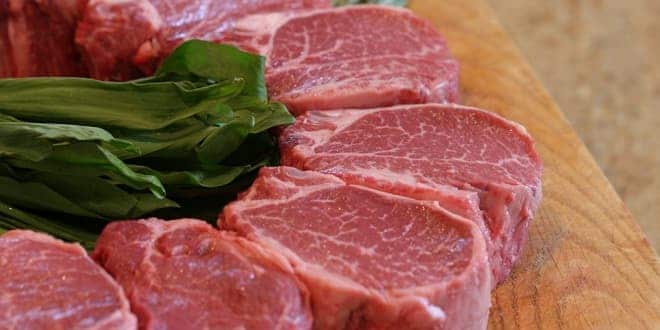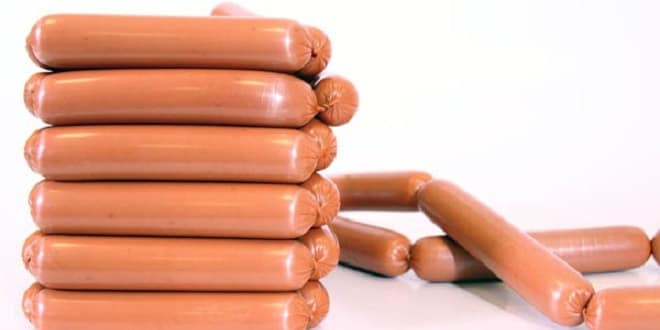Meat and Meat Products
•MEAT AND MEAT PRODUCTS
Nutritional significance
•Meat is a good source of easily digestible protein and contains essential amino acids which are vital for growth and maintenance of the body.
• It is also a good source of vitamins and minerals particularly iron.
• Processing, to form sausages, patties, or dried meat, does not have a substantial effect on the nutritive value when compared to normal cooking processes
•Meat processing
•Fresh meat should be kept under refrigeration or cool storage and covered to protect it from insects and animals.
•In all meat processing, the aim is twofold: to preserve the meat for a longer storage life, and to change the flavour and texture to increase variety in the diet.
•Salted, smoked, and dried meat
•In salting and curing, the main aim is preservation. This is achieved by high concentrations of salt which inhibit most microorganisms. This can be achieved by either rubbing salt into the meat (salting) or by soaking in salt solution (curing or brining).
•Salting or curing of meat is practiced in some countries to produce products such as salted pork or bacon
•In smoking, the effects of heat from the smoke, and chemicals in the smoke, combine to preserve the meat. Smoke also adds distinctive and attractive flavours and colours to the meat.
•TYPES OF SAUSAGE
•Cooked Fermented Sausage
•Smoked Sausage
•Fresh Sausage
•Cooked Sausage
•Made with fresh meats and then fully cooked.
•Central temperature of sausage rise to 70 C during the cooking process
•Then sudden cooling is applied
•Fresh Sausage
•Fresh sausages are not as widely produced as cooked sausages, and are typically consumed as breakfast meals.
•Typical fresh sausages include products such as pork sausages, beef sausage, breakfast sausage, Italian sausage, and fresh chorizo sausages.
•Cooked Fermented Sausage
•Meat dough is filled into cover then at 30-35 C is kept until the pH of meat decrease to 5.2-5.3.
•Then it is kept at 40 C 6-8 hours or 40-45 min. at 65 C and then cooled rapidly.
•Smoked Sausage
•Sausages are smoked at 37-43 C and they are kept at 65-68 C during the central temperature of reach to 58 C. Then it is cooled rapidly.
•Production of Turkish Sucuk
What is fermented sausage?
A sausage is fermented if
•-its pH below 5.6 -its color is heat-stable
•-its texture is no longer crumble
•-its aroma is typical
•-lactic acid bacteria predominate
•-Enterobacteriaceae counts are low
•Additives
•Salt:
àused about 2-7 %, show antibacterial action, it reduce water activity.
àIt imparts a typical salty taste.
•Nitrate/Nitrite:
for antimicrobial purpose
attained desired color
it has antioxidant action
gives flavour.
NOTE:excess amount of them cause Cancerogenic effects
Carbohydrates: glucose,fructose,starches are added
•In fermented prodcts these are serve as energy source for microorganisms
•As a result of fermentation pH decrease
•Decrease in pH prevent growth of microorganisms
•When the pH of the system reach to isoelectric of muscle protins, slicing of sausage becomes easier.
Phosphates
•Increase th pH
•Increase water holding capacity of proteins
•Slicing of product becomes easier.
•Decrease the cooking time for old animal meat.
•Spices: for aroma and flavour
•Drying: Reduce water activity
•Chilling: Lower temperature reduce or prevent microbial growth.Fresh meat normally can stored for 5-7 day at refrigeration Temp.
•Freezing: It will cause to kill some m/o by thermal shock.Ice formation,dehydration or solute concentration can cause to killing. Normally meat freeze at -1,5oC and can be stored for 6-12 month at -18oC.
•Caning: Meat is cooked to sterilize after the sealing in cans at 116oC or higher.
•Cooking: the main reasons of cooking are to make palatable and to make it safer to eat.In this process the centeral point must kept at 70 oC for 2 min.
•Salting/Curing/Smoking: were used to preserve meat and to develop the charecteristic desirable taste and flavour.
•Fermentation: the production of specific flavour and to preserve for long time by using m/o.
•Quality Parameters
1) moisture content
2) salt
3) fat
4) color
5) nitrite/ nitrate
7) bad flavour
8) microbial load.
•Moisture content:
•First of all it is important for microbial spoilage.
•It is important for textural properties
•Also it is important in terms of yield.
•Salt Content:
•It is important due to its antimicrobial effects.
•It gives salty taste.
pH:
•It is related with taste of meat products.
•And it gives idea about spoilage.
•Fat:
•It must be in limited amount in meat products
•It is important due to textural properties of meat products.
•Consumers do not prefer a meat product with high amount of fat instead of meat.
•Coloring matter:
•Normally any additional coloring matter is not prefered. Its color must be natural.
Residual Nitrite/Nitrate:
•Due to their cancerogenic effect the residual nitrite and nitrate amount must be controlled.
•Its amount must be fixed with limitation in TSE.
…




